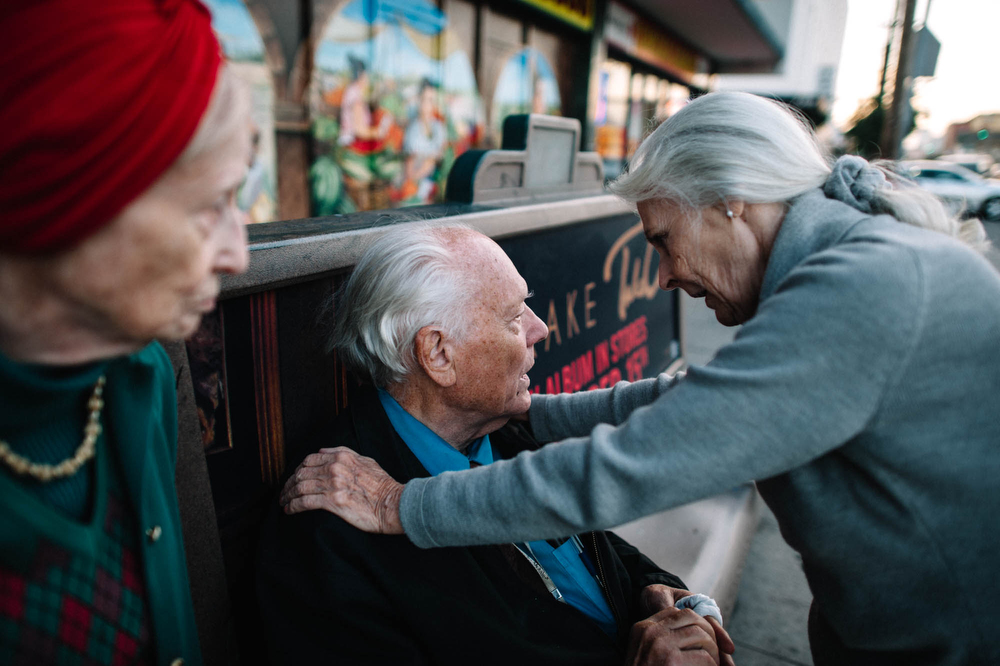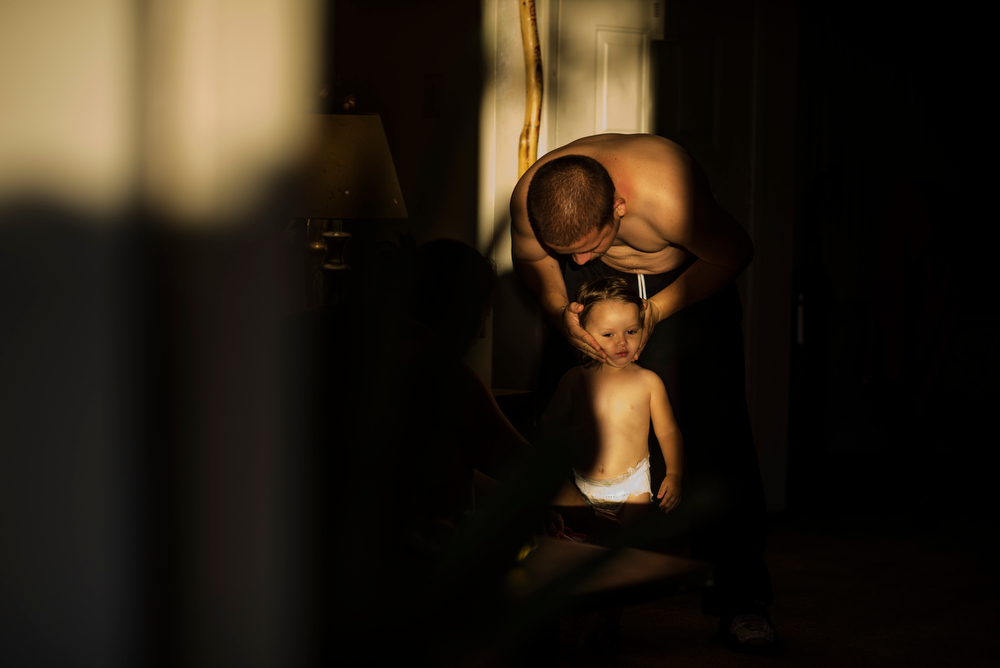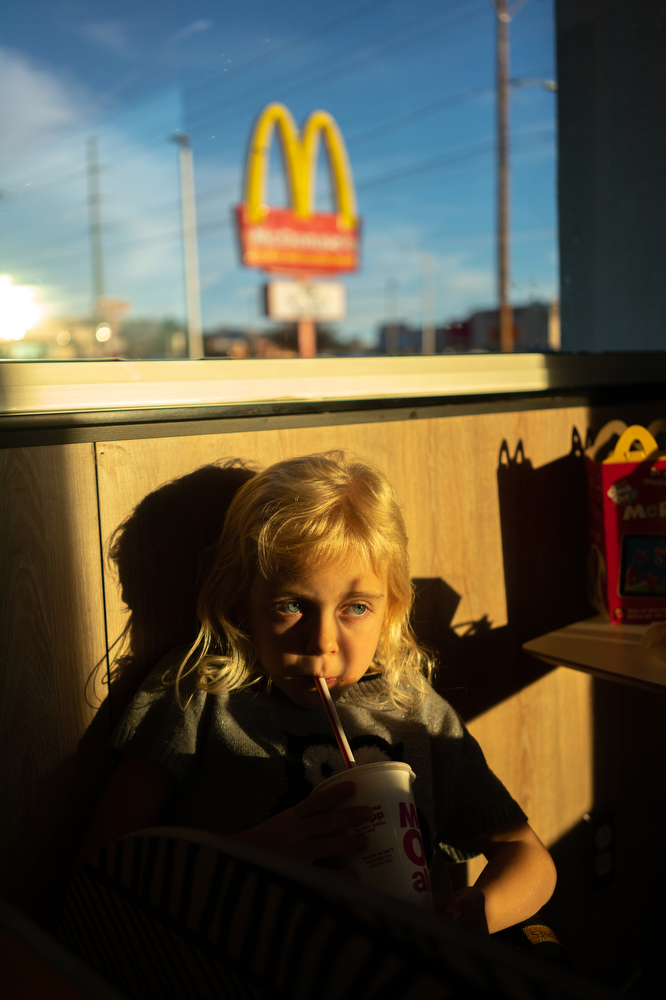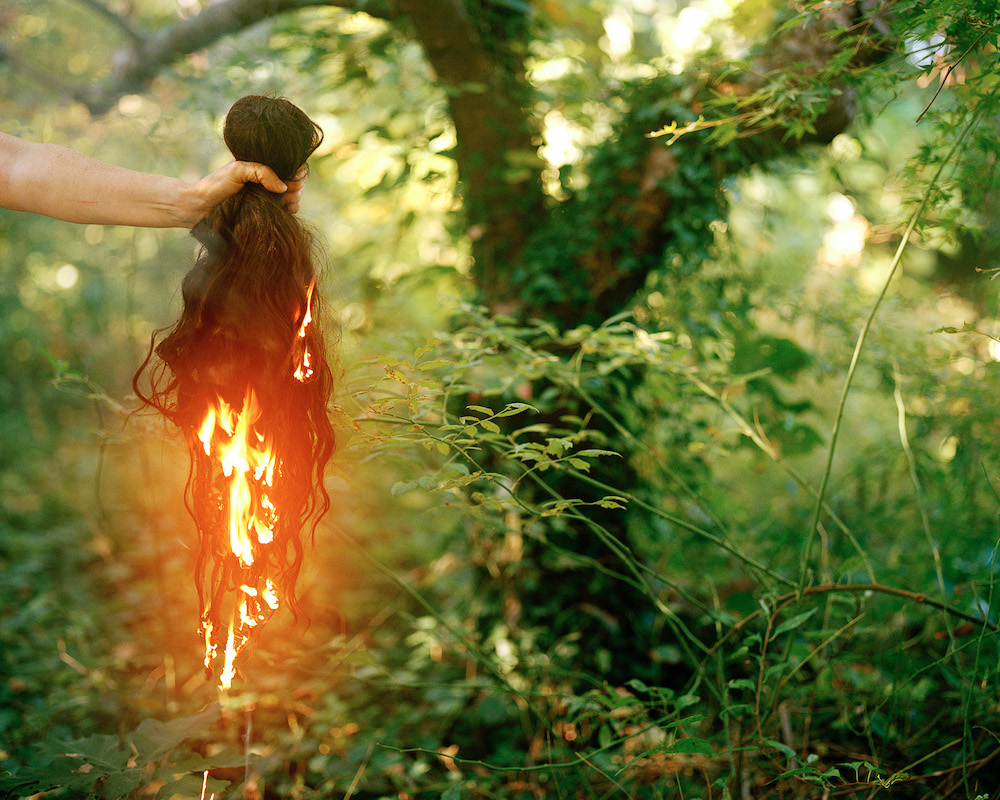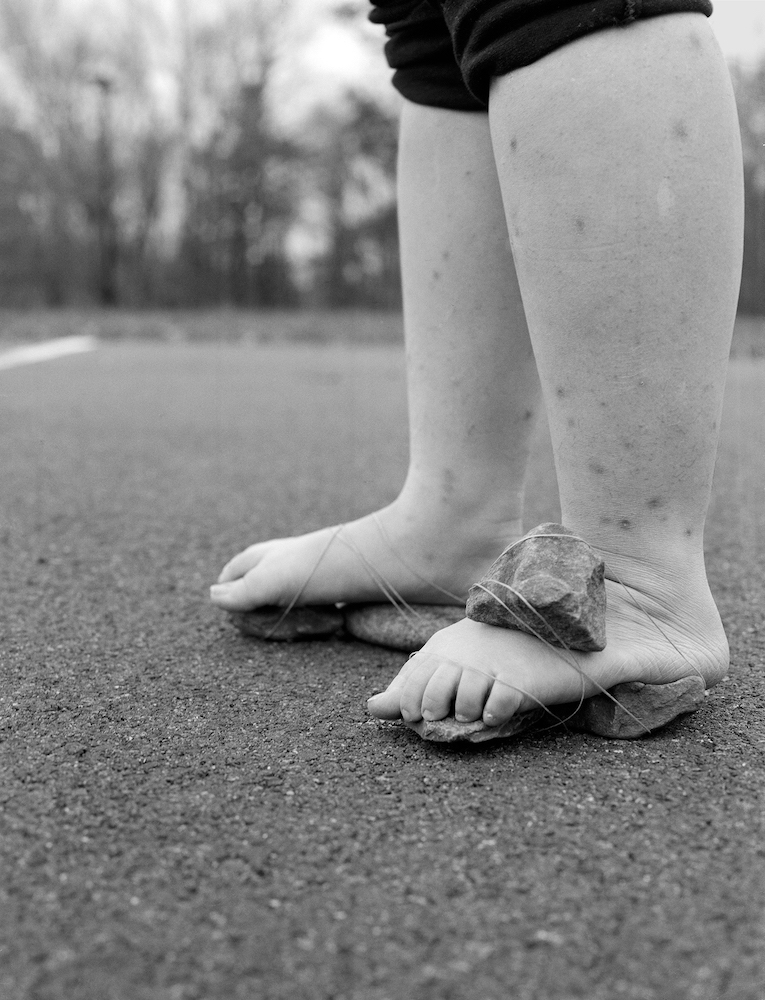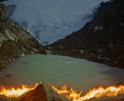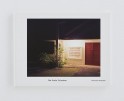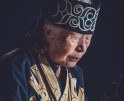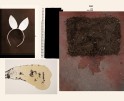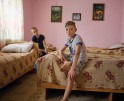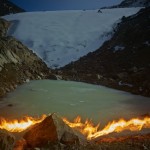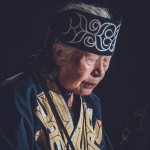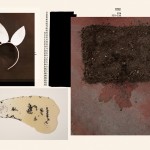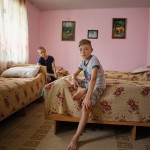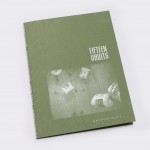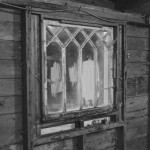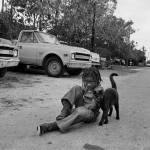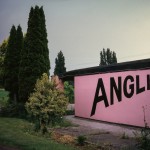Photographers on Photographers: Marisa Lucchese in coversation with Isadora Kosofsky
Early in my undergraduate studies in photography, I discovered Isadora Kosofsky’s work, and I immediately wrote her name down as a source of inspiration. Her use of light, the intimacy she captured, the clear care for her subjects that radiated from the images… it was all encompassing of the photographer I hoped I would one day become. When I got the chance to meet her this past year as she gave a lecture at my university, I could feel the excitement flowing through my veins at the prospect of hearing her talk about her work and showing her my own. When I was asked to contribute to the Photographers on Photographers, I knew that I wanted to continue the conversations that had begun earlier this year, especially as I have recently graduated and am entering the art world. It felt like a perfect full circle moment, and I hope this conversation can benefit other young photographers as it has for me.
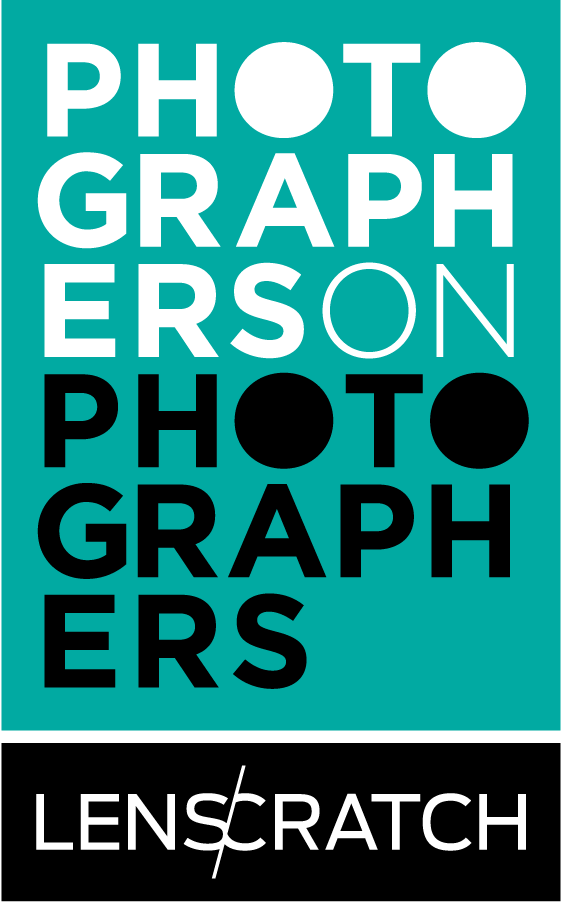 Isadora Kosofsky is a documentary photographer based in Los Angeles. She has focused on juvenile and mass incarceration, aging and relationships, healthcare, disability rights, and the impact of childhood trauma on women and families. She takes an immersive approach to documentary photography, often spending months and years with individuals and communities. Kosofsky is a National Geographic Photographer and a frequent contributor to the New York Times, the New York Times Magazine, TIME, Le Monde, Geo Germany and others. She photographed inside hospitals during the pandemic significantly and produced some of the only photojournalism from inside a COVID positive skilled nursing facility. Kosofsky received a 2012 Inge Morath Award from the Magnum Foundation and has received distinctions from the Pulitzer Center on Crisis Reporting, Getty Images, Flash Forward Magenta Foundation, Ian Parry Foundation, Social Documentary Network, International Academic Forum (IAFOR), Women in Photography International, Prix de la Photographie Paris, The New York Photo Festival and others. Her work on youth who have experienced incarceration and their families was exhibited at the 2017 Visa Pour L’Image International Festival of Photojournalism in Perpignan, France. The Royal Photo Society recently named her one of a hundred “heroines” in photography worldwide. Kosofsky is a TED Fellow, part of a network of global innovators, and gave a talk about documentary photography at TED 2018 in Vancouver. She was a 2020 Gwen Ifill Mentor through the International Women’s Media Foundation. Her book titled “Senior Love Triangle,” about three seniors in a romantic conflict, was published by Kehrer Verlag in 2020.
Isadora Kosofsky is a documentary photographer based in Los Angeles. She has focused on juvenile and mass incarceration, aging and relationships, healthcare, disability rights, and the impact of childhood trauma on women and families. She takes an immersive approach to documentary photography, often spending months and years with individuals and communities. Kosofsky is a National Geographic Photographer and a frequent contributor to the New York Times, the New York Times Magazine, TIME, Le Monde, Geo Germany and others. She photographed inside hospitals during the pandemic significantly and produced some of the only photojournalism from inside a COVID positive skilled nursing facility. Kosofsky received a 2012 Inge Morath Award from the Magnum Foundation and has received distinctions from the Pulitzer Center on Crisis Reporting, Getty Images, Flash Forward Magenta Foundation, Ian Parry Foundation, Social Documentary Network, International Academic Forum (IAFOR), Women in Photography International, Prix de la Photographie Paris, The New York Photo Festival and others. Her work on youth who have experienced incarceration and their families was exhibited at the 2017 Visa Pour L’Image International Festival of Photojournalism in Perpignan, France. The Royal Photo Society recently named her one of a hundred “heroines” in photography worldwide. Kosofsky is a TED Fellow, part of a network of global innovators, and gave a talk about documentary photography at TED 2018 in Vancouver. She was a 2020 Gwen Ifill Mentor through the International Women’s Media Foundation. Her book titled “Senior Love Triangle,” about three seniors in a romantic conflict, was published by Kehrer Verlag in 2020.
Follow Isadora Kosofsky on Instagram: @isadorakosofsky/
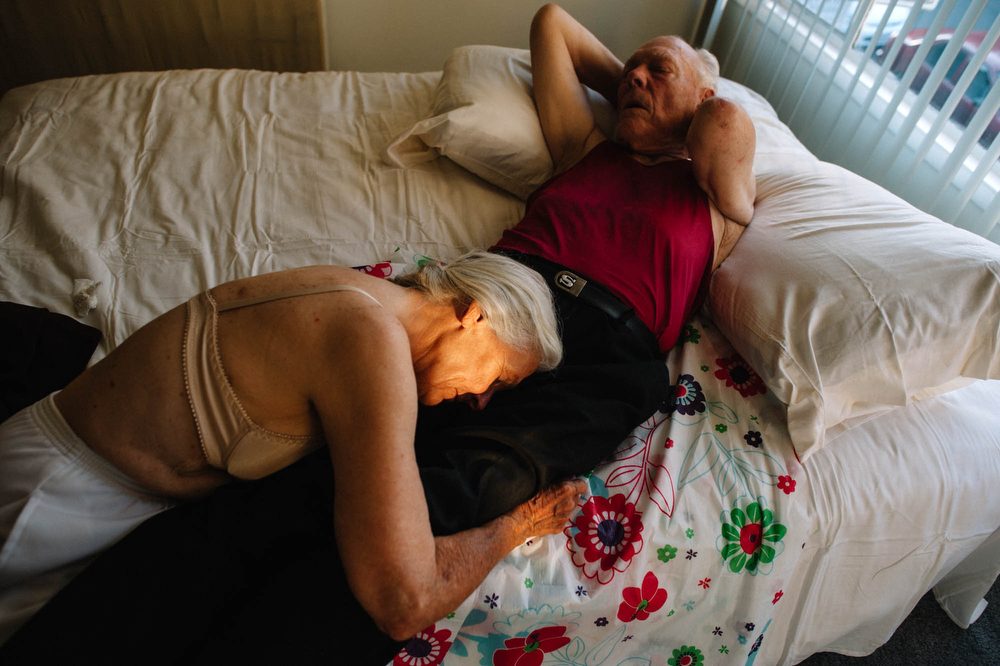
© Isadora Kosofsky, Jeanie rests her head on Will’s crotch as he lies back on his bed in Los Angeles.
How did your environment growing up influence your artistic practice?
I always felt like an outsider growing up; I had an early affinity for people who were pushed to the side or were unseen. I felt like no one truly saw me. Through my own traumatic experiences and those in my family, I learned the reality and nuance of the human condition. I observed the raw complexity of those around me and learned about the power of truth in a culture of secrecy. I also learned so profoundly that we only know a limited slice of someone’s trajectory from just gazing at them, from their surface. I became drawn to long-term documentary making from an early understanding that people need time and a safe space to “show” themselves, to open their hearts, and let me see the spectrum of who they are. Documentary photography is a kind of radical acceptance, a rare relationship where all parts of someone can be honored. In my early life, I also learned about resilience and how lightness and darkness often coexist. Both of my parents had childhood experiences in conflict zones. I originally thought I would become a war photographer, but I learned I was more drawn to wars hidden from view. Growing up, I felt older than my age and carried a sense of feeling like I was from another time. I loved classic cinema, particularly American Film Noir of the 40s and Italian Neorealism; I used to watch how shadow and light danced across actors Humphrey Bogart and Lauren Bacall’s faces. Being exposed to those films influenced me when I picked up a camera and began observing how light falls on those I photograph. From an early age, I was in love with story and believed storytelling’s transcendence. I wanted to make people feel less alone. I knew that story, both absorbing that of another or sharing your own, held both revolutionary and healing power.
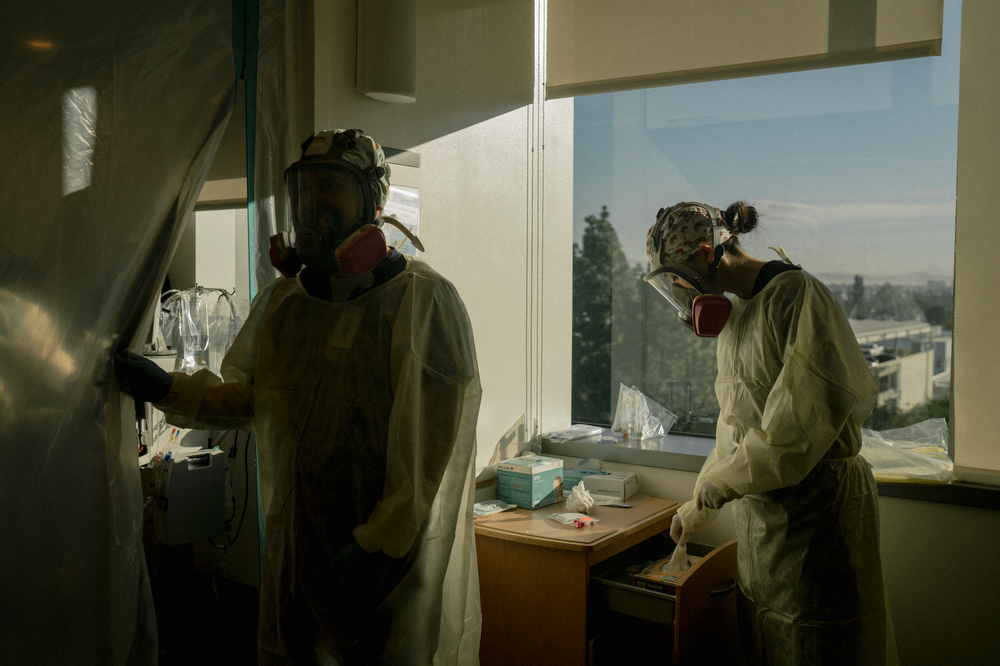
© Isadora Kosofsky, Jennifer Guinoo, a respiratory therapist, prepares to enter a room in the intensive care unit at Martin Luther King Jr. Community Hospital in Los Angeles, California.
How did you first become interested in exploring these difficult spaces, especially as a young teenager? Was there something that drew you to photographing grief?
I have always been motivated to enter spaces that typically people shy away from. I picked up a camera when I was 13. Grief stricken from the loss of my grandmother and watching my family crumble, the camera was my way to connect. It was a symbol of hope and a means to cultivate safe intimacy. I held my camera as a young teenager and knew that documentary photography would be the greatest love story of my life, taking me to the depths of self inquiry, despair, thrill and fulfillment. When I began photographing in hospice when I was a teenager, I was trying to understand death and dying. I was trying to understand loss, as I faced my own. During those initial three years in hospice care, I did not learn how to take photographs. I learned how to be with people. In that time, I received an education on how to sit and be with people in some of the most daunting moments of their lives. I learned how to listen in all ways and look for grace and dignity in moments of great fear and remoteness. Most of those with whom I sat did not receive family visits. Since then, I feel I have continued to work on documenting grief in its many manifestations. I often work to illustrate disenfranchised grief— grief that society does not acknowledge as legitimate.
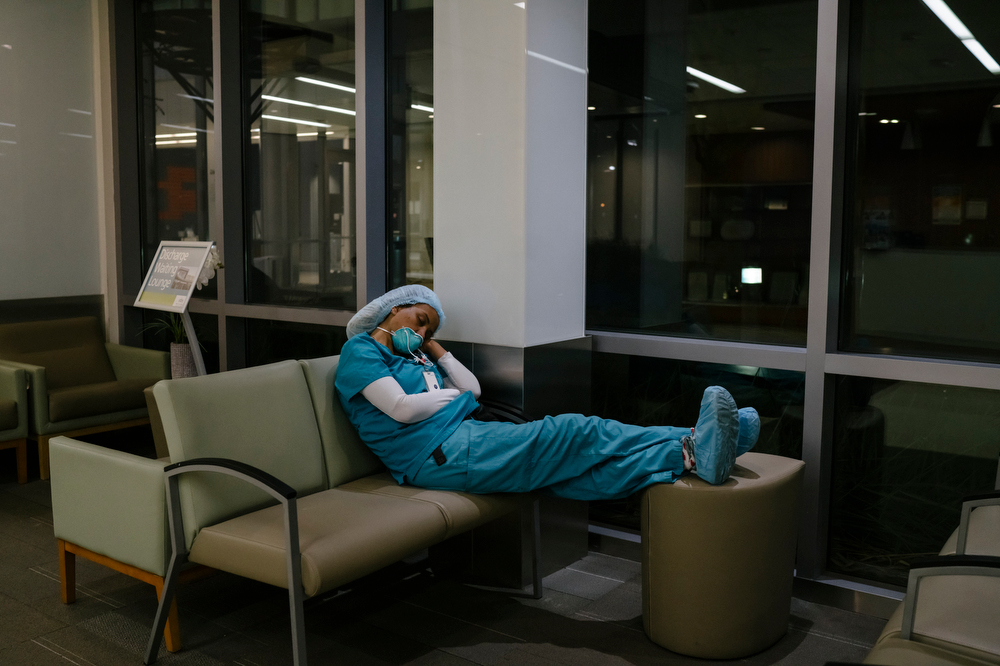
© Isadora Kosofsky, A healthcare worker naps at 2 AM at M.L.K Jr. Community Hospital in Los Angeles.
How do you decide what subjects you want to explore? How do you know there’s a story there?
I often have a personal connection to the communities I shadow long-term. When I began trying to gain access to a juvenile detention center as a young photographer, I had recently experienced my ex-boyfriend enter that system. Since I saw no humanistic, face visible, photography of incarcerated youth, I felt a sense of responsibility to photograph in those settings. I often know that I want to elevate and understand a particular topic and then seek permission to enter a setting without knowing what to expect or who I will meet. Once there, I connect with someone who I know I should shadow. I often feel within a few minutes of meeting the person that I want to photograph them. As a documentary photographer, you meet people while working on certain stories that are like soulmates. You connect immediately. It is as if a drumroll goes off when you first lock eyes. I experience this ineffable and intense curiosity. The sense is mysterious, but precise.
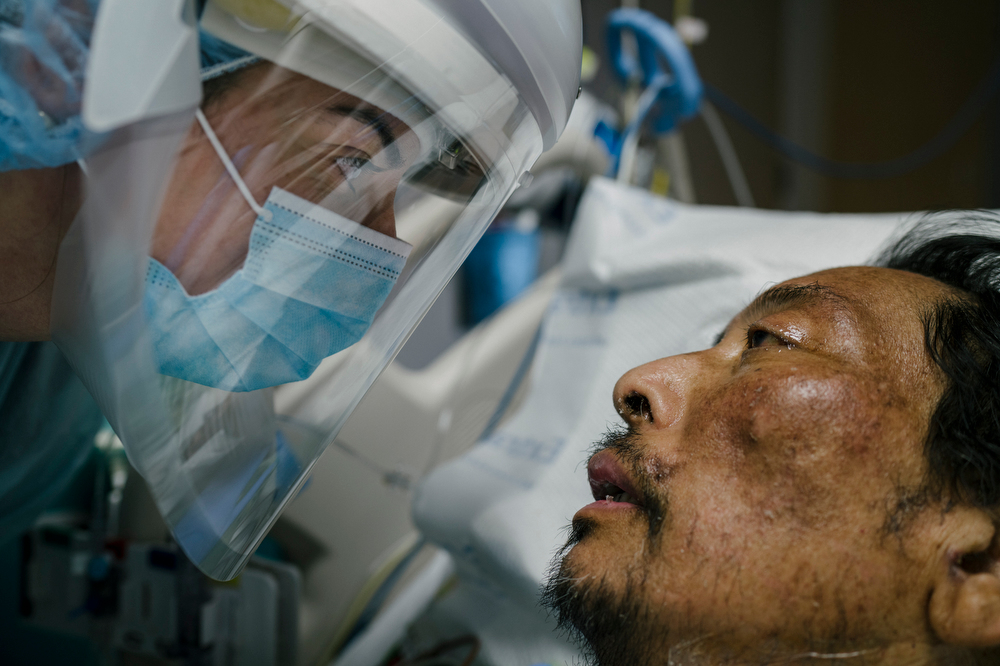
© Isadora Kosofsky, Melissa Peters, a speech therapist, attempts to have Dr. David Gutierrez speak in the intensive care unit at Saint John’s Health Center in Santa Monica, California.
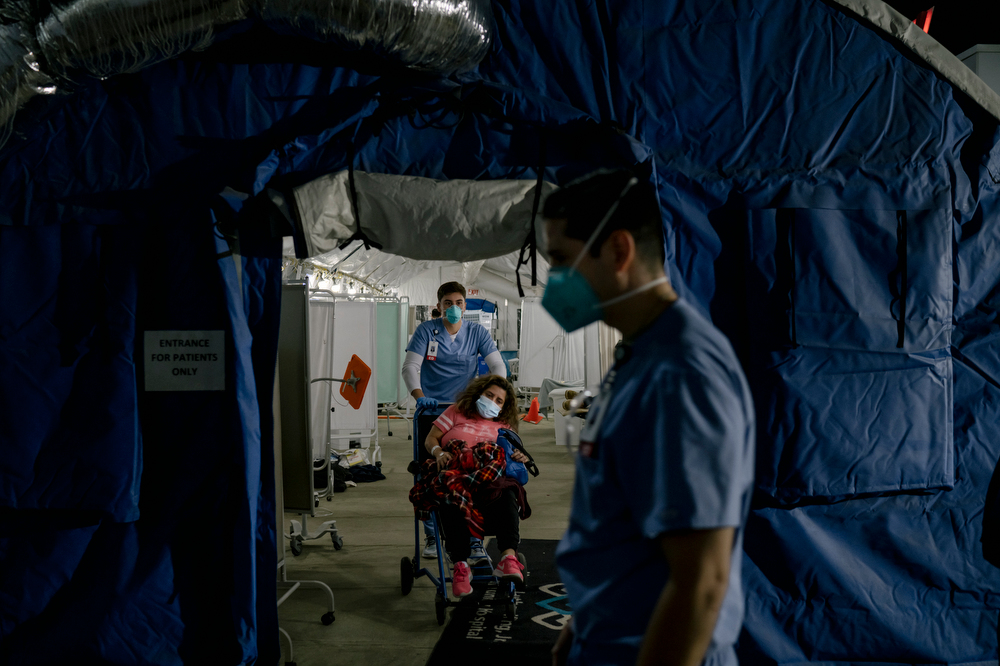
© Isadora Kosofsky, Daisy Murcia is pushed out of the triage tent to be admitted at M.L.K Jr. Community Hospital.
How do you go about gaining the trust of your subjects?
I don’t think there is a simple or concise answer to this question, as gaining someone’s trust is so rooted in that person’s personal history and their current situation. I, sometimes, initially spend weeks or months barely photographing. I immerse myself in an environment, so that I can absorb thoughts, emotions, and movements. Eventually, I begin to dissolve into the background where people do actually forget that you’re there. Documentary photography is often this paradox of being radically present, while fading away simultaneously. Trust is also deeply contingent on energy. Even when working on short assignments, people know quickly whether they can trust you or not. It comes down to authenticity, which you cannot fake. People know whether you are real or not. The decision to collaborate with someone on their story requires a mutual, usually organically understood, commitment; they open their hearts to a great unknown with immense risk, but often have a similar intuition that I experience. I remember being in the living room of a young woman’s apartment in Albuquerque; her husband and 2-year-old daughter were also there. She asked me to put my camera down and eat with them. At dinner, her husband asked me why I chose her as the person I wanted to document. I told him that I knew when I first saw her walk into the room I needed to know her. She said, “yeah, I picked you too.” We are somebody to those we photograph and that does not distract from the truth—it clarifies truth because people are then more comfortable to share who they are.
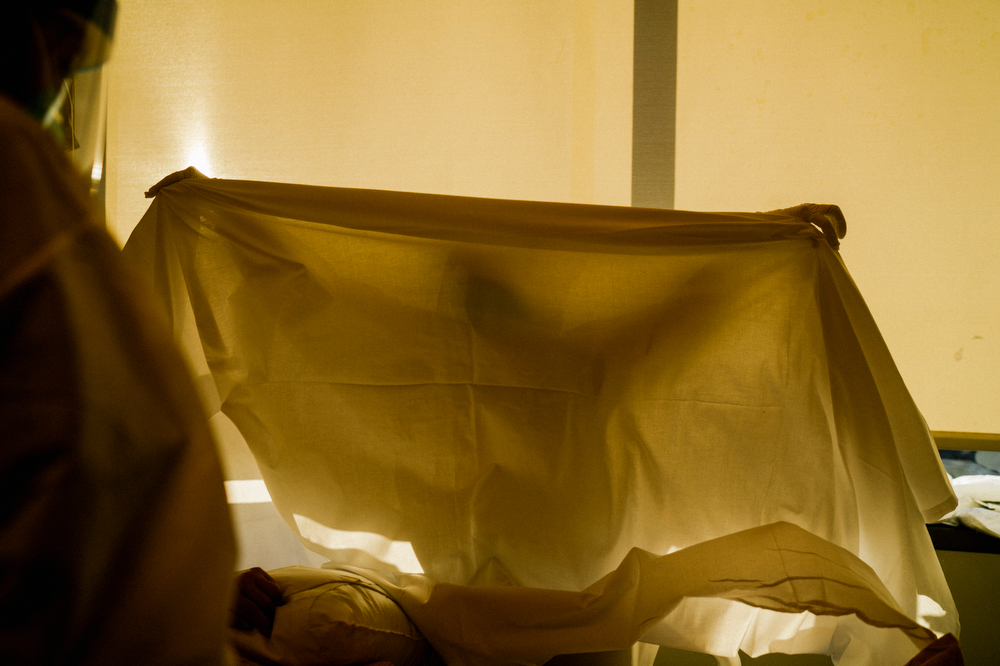
© Isadora Kosofsky, Michelle Goldson, an I.C.U. nurse, covering Emilio Virgen after towel bathing him at M.L.K Jr. Community Hospital in South LA.
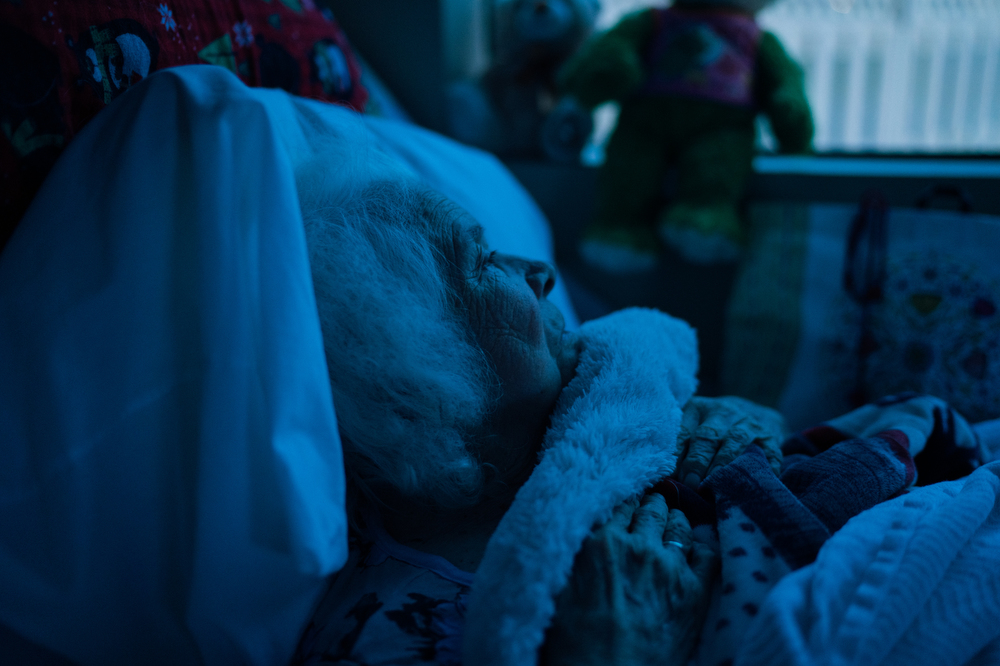
© Isadora Kosofsky, Juanita Lujan, 94, who has COVID-19, looks out the window of her room at Canyon Transitional Rehabilitation Center, a skilling nursing facility for residents of long-term care who are COVID positive, in Albuquerque, New Mexico.
How have you maintained your practice, especially dealing with such heavy subject matter? Does it ever get to be too much?
It is never too much because the weight that those I photograph carry is far heavier than what I hold while photographing them. I am humbled in the face of their struggle. I truly believe it is a privilege to be let into people’s lives and bear witness to such significant moments. My gratitude to the people I shadow helps me sustain my work. How can I stop? Documentary photography saved my life. It gave me a life of meaning and connection. Even in moments when I am discouraged, I am easily reminded of the privilege that is my life as a documentarian. My work enriches my soul and makes me more human after each day. I am privileged to form safe spaces that aim for people to feel comfortable in my presence. Documentary photography affords people another perspective on their own lives because, as documentarians, we hold the weight of both the lightness and darkness of the person in front of us. I value the relationships I form with the people I shadow above all else. The depth of the relationship allows for the intimacy of the photography.
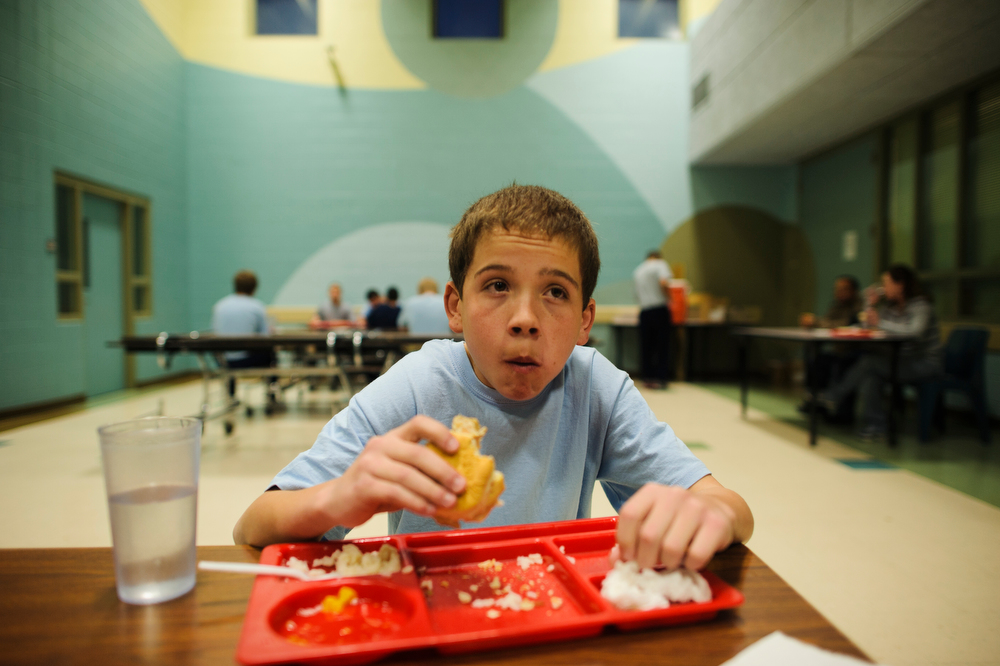
© Isadora Kosofsky, Vinny, 13, eats his first meal at the juvenile detention center in Albuquerque, New Mexico, in 2012. Vinny was arrested for stabbing the man who was assaulting his mother.
After spending so much time with your subjects or “collaborators”, how do they influence the work? How do you move on from a project?
When someone consents to be photographed that begins a collaboration; they are the expert on their own story. They guide the work through their trust in our process. Through their willingness to allow me to sit on their couch, lean against the corner of their wall, or ride in the backseat, they guide the process. I don’t really ever move on from most of my projects. I just keep going if the person or people are open to me continuing to visit them. Even after a story is published, I will often continue to return to photograph the person or family, as it just feels organic to continue. We are each so much more than our trauma and disenfranchisement, or a fragment of time in our lives. In my long-term work, I often work with people for a minimum of two years. Most of my projects span five to ten years, even if the work is published in chapters throughout that time. I often do not move on; I will work on other projects, while also maintaining another project with less intensity. I consider my process to be like a symphony where different notes are played separately or together at different times. I have been working on a project about a woman in California for the last ten years, which I have yet to share. I visit her periodically. I do not know when it will be ready. In my gut, I often just know when a project should be shared. Based on the closeness with the person documented, I, also, try to assess if every significant aspect has been illustrated. The choice of when to share is a very personal decision. Often an editor or colleague can rationalize why a documentation should be published. But as documentarians, we each know when our work is at a point of development when it should be seen. Ultimately, for me, documentary photography is concerned with the essence of a person. Yes, the storytelling is often framed around issues. But, for me, powerful humanistic storytelling is rooted in trying to convey the essence of a person. It can take a monumental amount of time to get to that essence.
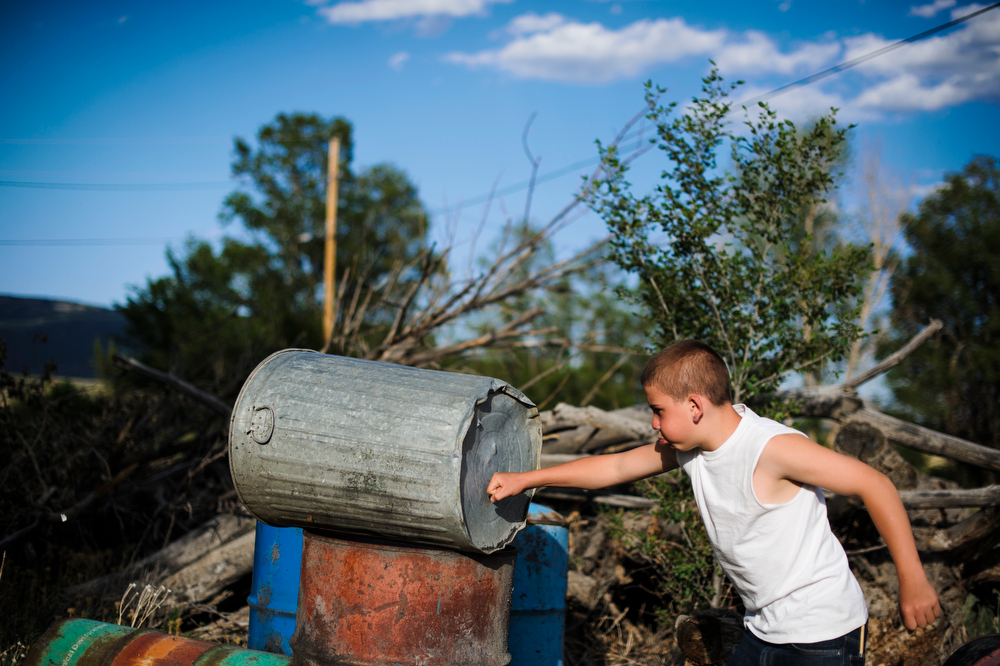
© Isadora Kosofsky, Vinny punches trash cans in the back of his aunt’s home a few months after his release from juvenile detention.
What led to your first “big break?” How do you keep creating without succumbing to the pressure of making “the next big thing?”
When my series, Senior Love Triangle, was published in TIME in 2012, the work received an unexpected level of attention. I never expected the project about Jeanie, Will, and Adina to have the reach that it has had. Thereafter, I received the Inge Morath Award from the Magnum Foundation, which also helped propel my career forward. To me, everything I work on is a big thing to me, whether it will be seen as such by others or not. I make work that I live for. I try to go with my camera where I feel I can be of service. I know that for each person I photograph—their story is a big thing. Their story is a big thing for me too. I carry their willingness to let me share in their lives with immense weight. I have found that pressure of the “the next big thing” fades when you root your practice in service. When I focus on the people I photograph, the volume of the pressure of the industry I am in goes down. The nature of the medium of documentary photography also helps me stay focused; documentary photography requires me to stay anchored in the present in a humble manner, unknowing of what is to come.
Could you share an experience of making a photograph that you’ve held for a long time? What is it about that memory or photograph that you hold close?
One Friday night at Martin Luther King Jr. Community Hospital during a major COVID wave in early 2021 in Los Angeles, I decided to go and sit in the blue triage tent where people who are suspected of having COVID are sent. I could have gone home after those twelve hours, but I felt like the day was not over yet. As I stood in the tent observing the nurses, I heard a voice from behind me. “Oh, you’re taking pictures,” Daisy said. I turned around and was met with a smile. “You should take my photo,” she said. Daisy and I connected immediately. I experienced that kind of drumroll go off inside me when I looked at her. “We were meant to meet,” Daisy said, as I stood in front of her in the tent. While her oxygen level was fairly normal, the doctor opted to have Daisy admitted because she was diabetic and asthmatic. Daisy’s husband is a plummer who contracted Covid-19 at work. Soon after, Daisy began to feel short of breath too. “You are my only visitor,” Daisy said as I sat with her in the dimly lit Fast Track area. “You are my only visitor” were words I kept repeating to myself for days thereafter. “My only visitor.” As if in just a few words, Daisy had synthesized my work and life of being with people in their most fragile and isolating moments. Daisy and I hoped that I could come to her home once she was well so I could meet her four grandchildren whom she was raising. I visited Daisy in her hospital room, but she was often sleeping. A few days later, she went into respiratory failure and had to be intubated. She passed away on February 7, 2021. I was shocked and heartbroken when I learned of Daisy’s passing. I located her family on Facebook. One of her sons, Justin, invited me to their home. We sat around a table eating zucchini pupusas, as I learned more about Daisy and looked at old family photographs. I will never forget her or our time together.
Could you tell me about your sources of inspiration in the photography world and outside of it?
I taught myself about documentary photography through sitting at the back of a used bookstore as a fourteen year old and looking through every photo book. I knew I wanted to be a social documentary photographer after seeing the work of Jane Evelyn Atwood, Eugene Richards, Ed Kashi, W. Eugene Smith. Jane Evelyn Atwood’s book Too Much Time, an eight year documentation of women in prison worldwide, was particularly inspiring because of her long-term commitment and conviction. Cinema has inspired me—perhaps more than photography in moments. The films of German directors Rainer Werner Fassbinder and Wim Wenders, the great Billy Wilder and others of American cinema of the 40s, Visconti and De Sica’s films during the Italian Neorealism period, and the work of Antonioni, all made an impact on me. Literature has also influenced me greatly as well as philosophy, like Kierkegaard’s writings on love. I encourage people to embrace other forms of storytelling and expression beyond photography as means of inspiration. Most importantly, my greatest sources of inspiration are the people I photograph. They teach me lessons on pain, fear, on transformation, and courage.
How do you balance creativity with making a living?
I am fortunate to make a living as a photographer and get to do what I love everyday. This profession is truly a lifestyle and way of being. All the work I do, even the assignments that may seem less interesting, influence my overall creativity. When you’re a documentary photographer or a photojournalist, life is your studio; you are constantly learning just from being placed into different scenarios, even those that initially make seem less compelling. When you are a documentarian, there is no such thing as wasting time; every moment you spend in communion with a person or place enhances your overall creative approach. When you are a documentarian, there is also no such thing as getting bored. I am fortunate to not have been bored since I was thirteen. Often personal work requires you to find your own source of funding. I am often covering my own expenses going to and from people I shadow for years, as most grants and publications cannot cover years of work most of the time. With all of that being said, a balanced life is nearly unattainable for a career documentary photographer. I have yet to find that seeming work-life balance.
What are the biggest challenges that you face in producing new work?
I am often balancing multiple projects at once and sometimes have to pause personal work when I take on assignments. It is sometimes a dance to balance both assigned work and personal projects. Institutional access is often a major challenge in creating new work, even when your story is associated with a major publication or you have previous experience in a particular area of focus. I sometimes work months or years to gain permission to enter facilities. During the last two and a half years, I worked painstakingly to gain access to photographs in hospitals and COVID positive long-term care facilities. At the beginning of the pandemic, when access inside a COVID positive skilled nursing home was deemed impossible due to restrictions, I worked vehemently to gain permission to photograph residents in one facility. After six months and multiple appeals, I was granted permission. Sometimes, I contend with rejection after rejection. I have experienced many rejection letters, emails, and calls from facilities when requesting access. Eventually, you end up where you are supposed to be. You just have to be motivated even when you are told your hope is “impossible.”
Marisa Lucchese is a New York-based fine art photographer who received her Bachelor of Fine Arts in Photography from the State University of New York at New Paltz in December 2022. Her work is concerned with making the invisible visible. She focuses on representing internal spaces, creating discussions around ideas such as legacy, loss, asexuality, and mental illness.
Her work has been exhibited at the Dorsky Museum (New Paltz, NY), Unison Arts Center (New Paltz, NY), Sojourner Truth Library (New Paltz, NY), RedLine Contemporary Art Center (Denver, Colorado), and Space Place (Nizhny Tagil, Russia). Her writing has been published on the fine art photography website Lenscratch, where she works as an intern. She has also interned at the Unison Arts Center and Loupe Digital Studio. She has been a teaching assistant and a student lab assistant in the equipment cage at SUNY New Paltz.
Follow Marisa Lucchese on Instagram: @marisalucchese_
Posts on Lenscratch may not be reproduced without the permission of the Lenscratch staff and the photographer.
Recommended
-
Earth Week: Simon Norfolk: When I am Laid in EarthApril 27th, 2024
-
Shinichiro Nagasawa: The Bonin IslandersApril 2nd, 2024
-
The International Women in Photo Association Awards: Lorraine Turci: The Resilience of the CrowMarch 16th, 2024
-
The International Women in Photo Association Awards: Rayito Flores Pelcastre: Chirping of CricketsMarch 14th, 2024
-
The International Women in Photo Association Awards: Louise Amelie: What Does Migration Mean for those who Stay BehindMarch 12th, 2024

